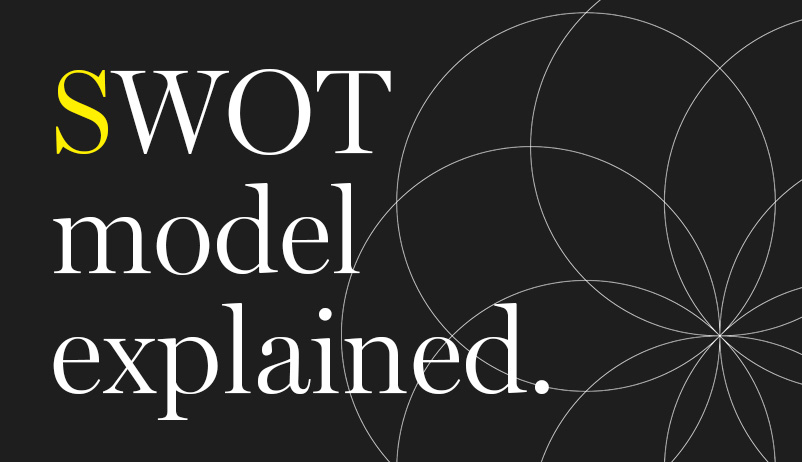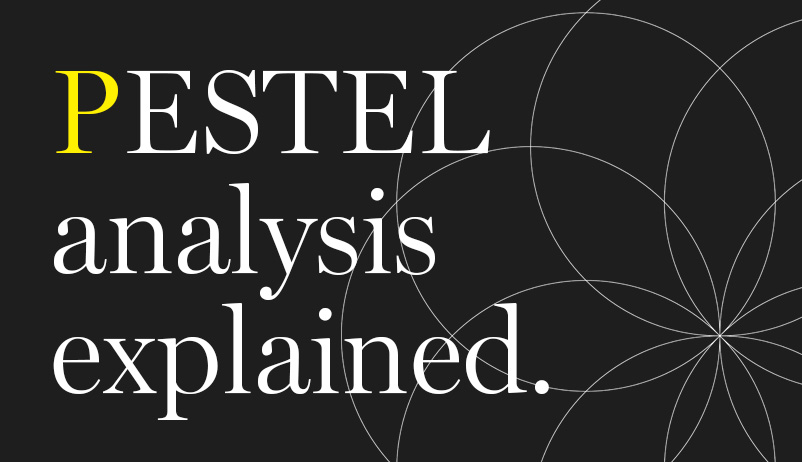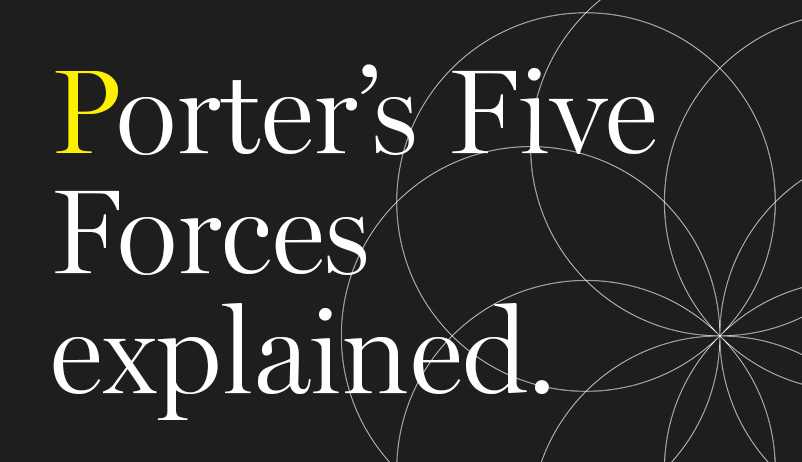

Business Model Canvas
Business Model Canvas
What is the Business Model Canvas?
Lorem ipsum dolor sit amet, consectetur adipiscing elit. Suspendisse varius enim in eros elementum tristique. Duis cursus, mi quis viverra ornare, eros dolor interdum nulla, ut commodo diam libero vitae erat. Aenean faucibus nibh et justo cursus id rutrum lorem imperdiet. Nunc ut sem vitae risus tristique posuere.
What Does Business Model Canvas Mean in Marketing?
In marketing, the Business Model Canvas (BMC) is a strategic management tool used to create, analyse, and communicate a company's business model. It provides a visual representation of a company's key elements and their relationships, enabling organisations to identify and evaluate their value proposition, customer segments, revenue streams, key partners, resources, and costs. Developed by Alexander Osterwalder and Yves Pigneur, the BMC has gained widespread acceptance as a standard tool for designing and analysing business models.
What Are the Key Elements of the Business Canvas Model?
The BCM is made up of nine elements, summarised below:
- Customer Segments: This element defines the different groups of customers or market segments that the business targets with its products or services.
- Value Propositions: It describes the unique value and benefits that the business offers to its customers, addressing their needs, solving their problems, or fulfilling their desires.
- Channels: This element outlines the various channels through which the business reaches and interacts with its customers, such as direct sales, online platforms, distribution partners, or physical stores.
- Customer Relationships: It defines the type of relationship the business establishes and maintains with its customers, ranging from personal assistance to self-service, community building, or automated support.
- Revenue Streams: This element represents the different sources of revenue for the business, including product sales, subscriptions, licensing fees, advertising, or service fees.
- Key Resources: It encompasses the essential resources, assets, or capabilities required to operate the business successfully, such as physical resources, intellectual property, human capital, or strategic partnerships.
- Key Activities: This element identifies the core activities and processes that the business needs to perform effectively to deliver its value proposition and maintain its operations.
- Key Partnerships: It refers to the strategic alliances, collaborations, or partnerships that the business forms with other organisations to leverage resources, access new markets, or enhance capabilities.
- Cost Structure: This element outlines the cost components and structure of the business, including fixed costs, variable costs, economies of scale, or cost-saving measures.
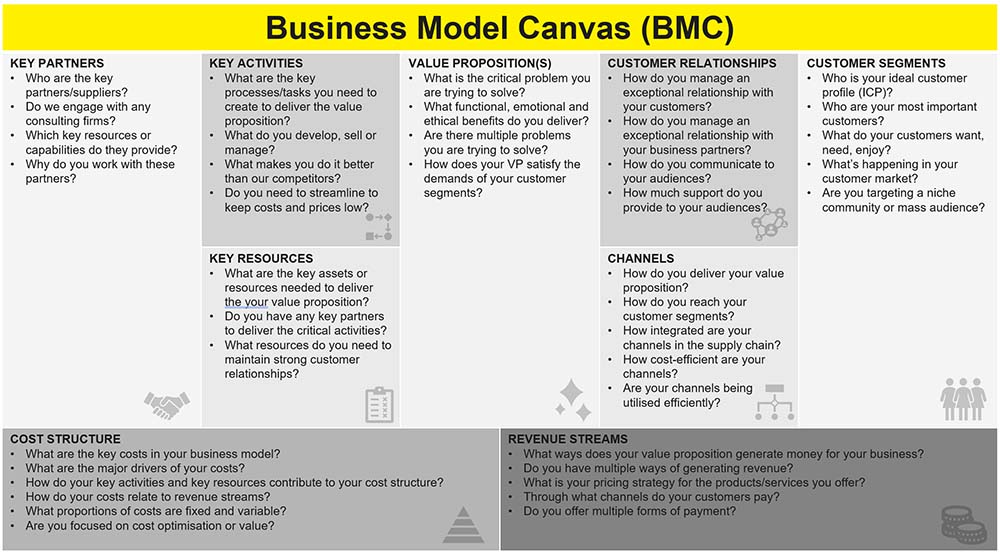
What Is the Purpose of the Business Model Canvas?
The purpose of the BMC is to provide a structured and visual framework for business leaders to describe, analyse, and design their business models. It helps organisations gain a clear understanding of how they create, deliver, and capture value in the market. The BMC enables businesses to:
- Describe and Communicate their Business Model: The canvas allows businesses to articulate and visualise the key elements of their business model in a concise and easily understandable format. It facilitates effective communication and alignment within the organisation and with external stakeholders.
- Identify Opportunities for Innovation and Improvement: By assessing each element of the canvas, businesses can identify areas where their current model can be enhanced, optimised, or expanded. It encourages creative thinking and exploration of new value propositions, customer segments, channels, or revenue streams.
- Analyse and Understand the Interdependencies Between Elements: The BMC enables businesses to evaluate the relationships and dependencies between different elements of their business model. This analysis helps in identifying potential risks, gaps, or areas of misalignment that need to be addressed.
- Support Strategic Decision-Making: The canvas serves as a tool for strategic planning and decision-making. It allows businesses to assess the impact of potential changes, innovations, or strategic initiatives on their overall business model. It helps organisations evaluate different scenarios, prioritise resources, and make informed choices to achieve their strategic objectives.
- Facilitate Collaboration and Alignment: The BMC encourages cross-functional collaboration and alignment within the organisation. It provides a common language and framework for teams to work together, share insights, and contribute to the development and refinement of the business model.
Overall, the purpose of the BMC is to enable businesses to have a clear and comprehensive view of their business model, identify opportunities for growth and innovation, and make strategic decisions that drive value creation and sustainable success.
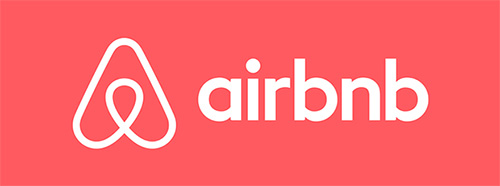
Example of a Business Model Canvas Analysis - Airbnb.
Here’s how Airbnb applied the Business Model Canvas to define its business model and align its various elements to create a successful and disruptive platform for the hospitality industry:
- Customer Segments: Airbnb targets both travellers looking for unique and affordable accommodations and hosts who want to rent out their properties.
- Value Propositions: Airbnb provides travellers with a wide range of lodging options at various price points, offering a more authentic and personalised experience compared to traditional hotels. For hosts, Airbnb offers an opportunity to monetise their spare space.
- Channels: Airbnb operates through its online platform, allowing hosts to list their properties and connect with potential guests. It also leverages digital marketing channels, social media, and partnerships to reach and engage both hosts and guests.
- Customer Relationships: Airbnb fosters a community-driven approach, emphasising trust and transparency between hosts and guests. It provides communication tools and review systems to facilitate interactions and build relationships.
- Revenue Streams: Airbnb generates revenue through a commission-based model, charging hosts a percentage fee for each booking and guests a service fee. They also offer additional services like Airbnb Experiences, which provide unique activities for travellers.
- Key Resources: Airbnb's key resources include its technology platform, brand reputation, customer base, and strategic partnerships with property owners, payment processors, and other service providers.
- Key Activities: The key activities of Airbnb include maintaining and improving its platform, ensuring a seamless booking experience, building and managing relationships with hosts and guests, and implementing effective marketing and customer support strategies.
- Key Partnerships: Airbnb forms partnerships with property owners, property management companies, tourism organisations, and various service providers to expand its inventory and enhance the overall experience for hosts and guests.
- Cost Structure: Airbnb's costs include platform maintenance and development, marketing and advertising, customer support, legal and regulatory compliance, and other operational expenses.
"I'd encourage all businesses to use the Business Model Canvas as a tool for analysing, designing and optimising their business models. It's advantages include visual representation, flexibility, and identifying gaps. But like all frameworks, be mindful of its limitations including oversimplification and lack of quantitative analysis."
Paul Mills
Founder, VCMO
What Are the Advantages of the Business Model Canvas?
The Business Model Canvas (BMC) offers several advantages for businesses, including:
- Visual Representation: The BMC provides a visual and concise representation of the business model, allowing stakeholders to quickly understand and grasp the key elements and their interrelationships. It enhances communication and alignment within the organisation and with external stakeholders.
- Comprehensive Overview: The BMC covers all essential aspects of a business model, including customer segments, value propositions, channels, revenue streams, key resources, key activities, key partnerships, and cost structure. It ensures that no critical elements are overlooked and provides a holistic view of the business.
- Flexible and Adaptable: The BMC is a flexible tool that can be easily modified and updated as the business evolves. It allows businesses to iterate and experiment with different ideas, value propositions, or customer segments. It supports agility and adaptability in a dynamic and changing market environment.
- Identifying Gaps and Opportunities: The BMC helps businesses identify gaps, weaknesses, or areas for improvement in their current business model. It enables organisations to spot new opportunities for growth, innovation, or diversification. By evaluating each element, businesses can identify areas where they can differentiate themselves and create competitive advantages.
- Strategic Decision-Making: The BMC serves as a strategic tool that guides decision-making. It helps businesses evaluate the impact of potential changes, strategies, or initiatives on their overall business model. It aids in prioritising resources, setting strategic objectives, and aligning actions with the desired outcomes.
- Collaboration and Alignment: The BMC facilitates collaboration and alignment within the organisation. It brings different teams and stakeholders together, encouraging cross-functional discussions and contributions. It promotes a shared understanding of the business model and encourages collective ownership.
- Integration with Other Frameworks: The BMC can be easily integrated with other strategic frameworks (see below). It allows businesses to combine multiple perspectives and tools to gain a more comprehensive understanding of their business and the market.
What Are the Disadvantages of the Business Model Canvas?
While the Business Model Canvas (BMC) offers several advantages, it also has some limitations and disadvantages to consider:
- Oversimplification: The BMC condenses the complexity of a business model into nine key elements. This simplification may overlook certain nuances and intricacies, potentially leading to an incomplete understanding of the business and its dynamics.
- Lack of Quantitative Analysis: The BMC focuses more on qualitative aspects of the business model, such as value propositions and customer segments. It doesn't provide a detailed quantitative analysis of financial projections or specific metrics, which may be crucial for decision-making and financial planning.
- Limited Industry-Specific Guidance: The BMC is a general framework that can be applied to various industries. However, it doesn't provide specific guidance or tailored considerations for different sectors or business models. Additional industry-specific frameworks may be needed for a more comprehensive analysis.
- Static Representation: The BMC captures a snapshot of the business model at a particular point in time. However, business models are dynamic and evolve over time. The canvas may not adequately address the ongoing changes, adaptations, or disruptions in the market and industry.
- Lack of Prioritisation: The BMC treats all elements equally, without explicitly addressing their relative importance or priority. It doesn't provide a clear framework for prioritising or ranking different elements, potentially leading to a lack of focus and resource allocation.
- Limited Focus on External Factors: The BMC primarily focuses on internal elements of the business model, such as value propositions and customer segments. It may not provide sufficient emphasis on external factors like market trends, competition, or regulatory environment, which can significantly impact the success of the business.
- Limited Guidance on Implementation: While the BMC helps in analysing and designing the business model, it doesn't offer detailed guidance on implementation or execution strategies. Additional tools and frameworks may be required to translate the identified elements into actionable plans.
What Other Frameworks Can Be Used With BMC?
The Business Model Canvas (BMC) can be complemented and enhanced by incorporating other frameworks and tools to provide a more comprehensive analysis of a business. Some frameworks that can be used alongside the BMC include:
SWOT Analysis
SWOT (Strengths, Weaknesses, Opportunities, Threats) analysis helps identify internal and external factors that impact the business's strategic position. It can provide valuable insights to inform the elements of the BMC. Click this link to learn more about SWOT.
PESTEL Analysis
PESTEL (Political, Economic, Social, Technological, Environmental, Legal) analysis assesses the macro-environmental factors affecting a business. It helps identify key trends, opportunities, and risks that can influence the business model. Click this link to learn more about PESTEL.
Value Chain Analysis
Value Chain analysis breaks down the activities of a business into primary and support activities. It helps identify areas of competitive advantage, cost savings, and potential value creation, aligning with the value proposition and key activities in the BMC.
Porter's Five Forces
Porter's Five Forces analysis evaluates the competitive forces in an industry, including the threat of new entrants, bargaining power of suppliers and buyers, threat of substitutes, and industry rivalry. It provides insights into the competitive landscape, which can inform the customer segments and competitive advantage in the BMC. Click this link to learn more about Porter's Five Forces Model.
Customer Journey Mapping
Customer Journey Mapping helps visualise and understand the customer's interactions and experiences throughout their journey with the business. It helps identify pain points, opportunities for improvement, and areas to enhance the customer experience, aligning with the customer segments and value proposition in the BMC.
Blue Ocean Strategy
Blue Ocean Strategy encourages businesses to identify uncontested market spaces, creating new demand and differentiation. It helps businesses explore new value propositions, customer segments, or channels, aligning with the innovative aspects of the BMC.
These frameworks can be used alongside the BMC to provide a more comprehensive analysis, enhance strategic decision-making, and ensure that various internal and external factors are considered in shaping and refining the business model.
Recap on the Business Model Canvas.
The Business Model Canvas (BMC) is a visual framework that captures the key elements of a business model. Its advantages lie in providing a clear and concise overview of the business, fostering communication, identifying gaps and opportunities, supporting strategic decision-making, and promoting collaboration.
However, the BMC has limitations, including potential oversimplification, lack of quantitative analysis, limited industry-specific guidance, static representation, limited focus on external factors, lack of prioritisation, and limited guidance on implementation.
Recognising these limitations and supplementing the BMC with additional tools and analysis methods can enhance its effectiveness in analysing and designing business models.
About VCMO
VCMO is a UK-based provider of fractional marketing services, supporting B2B SMEs—ranging from funded scale-ups to mid-tier and private equity-backed businesses—through key moments of growth and transformation. Its Chartered Fractional CMOs and SOSTAC® certified planners embed strategic marketing leadership into organisations navigating product launches, new market entry, acquisitions, and leadership gaps.
Ready to take your marketing to the next level? Let us help you get there.
Subscribe to Our Newsletter
Fractional Edge is our montly newsletter sharing expert opinion on the latest trends in fractional leadership, curated marketing content from leading sources, VCMO events, and much more. Subscribing is quick — just add your name and email.


